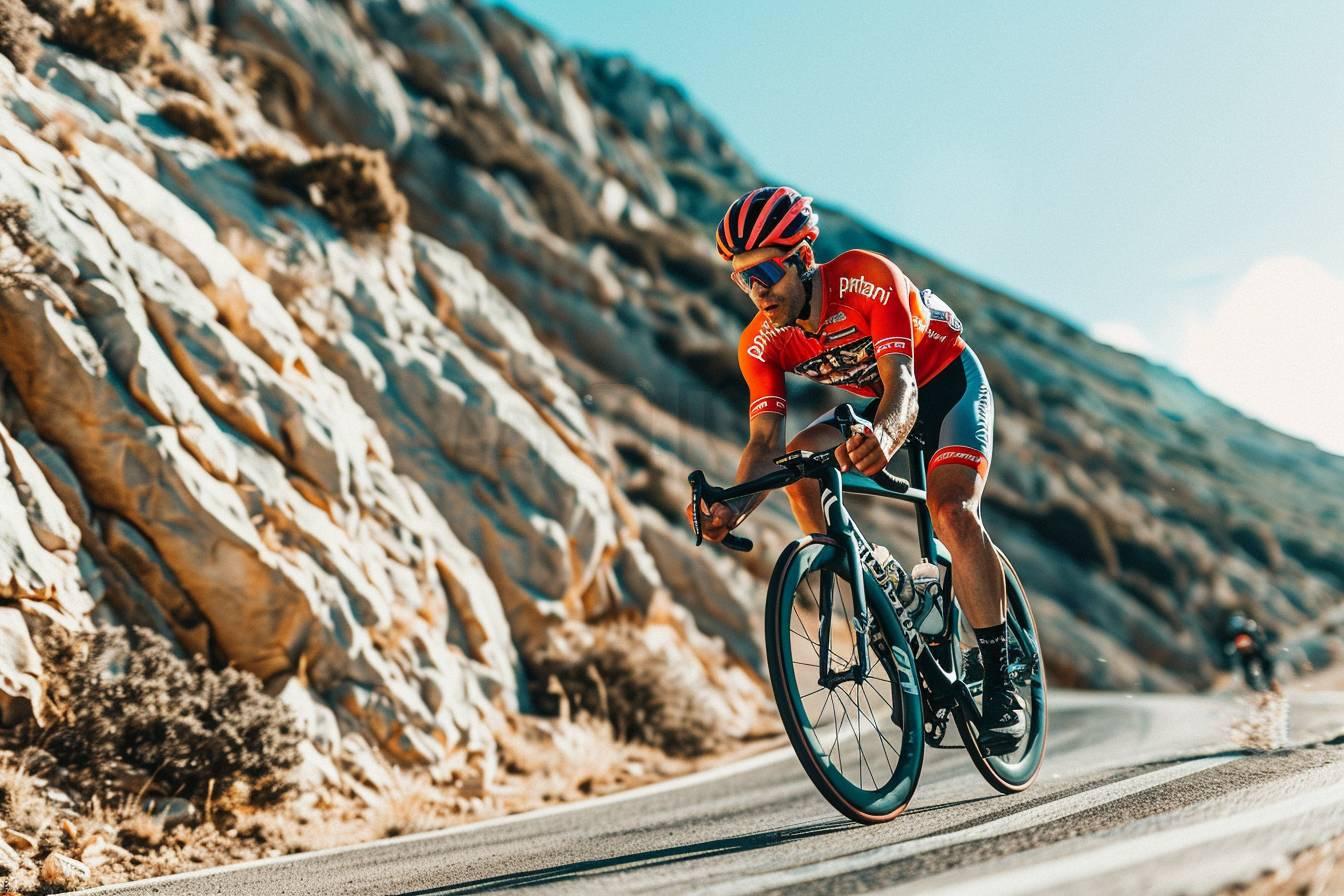The supertuck, a controversial descending technique in professional cycling, has been banned by UCI, sparking debates about safety and performance.
- Aerodynamic advantage : Reduces drag by 9-17%
- Safety concerns : Potential risks for riders, especially amateurs
- Ban implications : Mixed reactions from cycling community
- Future considerations : Balancing performance and safety in cycling
The supertuck position has become a hot topic in the world of professional cycling. This controversial descending technique, known for its aerodynamic advantages, has sparked debates among riders, fans, and officials alike. Let’s dive into the intricacies of the supertuck and explore its impact on the sport.
What is the supertuck and why does it matter ?
The supertuck is a daring cycling position where riders sit on the top tube of their bike with their chest lowered over the handlebars during descents. This aerodynamic posture has gained popularity among professional cyclists for its potential to shave precious seconds off their times.
Wind tunnel studies have shown that the supertuck can reduce drag by 9-17% compared to normal seated positions. This significant aerodynamic advantage has made it a go-to technique for many riders looking to gain an edge in races.
Matej Mohoric is credited with popularizing the supertuck in professional cycling after using it to clinch victory in the 2013 U23 World Championships. Since then, other notable riders such as Chris Froome, Julian Alaphilippe, and Peter Sagan have embraced this technique in various races.
However, the supertuck’s rise to prominence has not been without controversy. Critics argue that it poses safety risks and sets a dangerous example for amateur riders. This debate has led to significant changes in the sport’s regulations.
The ban and its implications for professional racing
In a move that sent shockwaves through the cycling community, the Union Cycliste Internationale (UCI) announced a ban on the supertuck position for professional races, effective April 1, 2021. This decision has been met with mixed reactions from riders, teams, and fans.
Supporters of the ban argue that it’s a necessary step to prioritize rider safety. They point out that while only one professional rider (Élie Gesbert in 2018) has crashed directly due to the supertuck position, the potential for accidents remains high, especially when amateur cyclists attempt to mimic their professional idols.
On the other hand, critics of the ban feel that the UCI may have overstepped its bounds. Many riders expressed frustration that they were not properly consulted before the implementation of the new rule. Some argue that there are more pressing safety issues in professional cycling that deserve attention.
The ban’s impact on racing strategies and outcomes remains to be seen. While some fear it might limit riders’ ability to gain advantages on descents, others believe that alternative aerodynamic positions, such as the “Pantani” position, can still provide similar benefits within the rules.
| Pros of the Supertuck | Cons of the Supertuck |
|---|---|
| Significant aerodynamic advantage | Potential safety risks |
| Time-saving on descents | Controversial among cycling officials |
| Popular among professional riders | May encourage dangerous imitation by amateurs |

The real-world impact of the supertuck
While wind tunnel studies have demonstrated the aerodynamic benefits of the supertuck, its real-world advantage may be more limited than initially thought. Riders cannot maintain the position constantly on descents due to the need for braking, steering, and navigating turns.
Aerodynamics experts suggest that the impact of the supertuck ban on race results may be minimal. They argue that riders can still achieve similar aerodynamic benefits using legal positions, such as the aforementioned “Pantani” position.
It’s worth noting that the supertuck is just one of many factors that contribute to a cyclist’s performance. Other elements, such as overall fitness and regular cycling habits, play a crucial role in a rider’s success.
The future of cycling techniques and safety measures
The supertuck controversy has sparked a broader conversation about innovation, safety, and regulation in professional cycling. As the sport continues to evolve, it’s likely that we’ll see new techniques and technologies emerge, each bringing its own set of challenges and debates.
Some key considerations for the future of cycling include :
- Balancing performance advantages with rider safety
- Improving communication between governing bodies and athletes
- Developing new safety measures and equipment
- Encouraging responsible riding practices among amateur cyclists
As cycling technology advances, we may see the development of new electric vehicles and accessories that could further change the landscape of both professional and amateur cycling.
The cycling community must work together to find a balance between pushing the boundaries of performance and maintaining a safe environment for all riders. This may involve ongoing discussions about rules and regulations, as well as increased efforts to educate amateur cyclists about the risks associated with certain professional techniques.
In conclusion, while the supertuck may no longer be a part of professional racing, its impact on the sport will be felt for years to come. As cycling continues to evolve, it’s crucial for riders, officials, and fans to remain open to new ideas while prioritizing safety and fair competition. Whether you’re a professional cyclist or a casual rider using a foldable electric bike for your commute, the spirit of innovation and the pursuit of excellence will always be at the heart of cycling.
